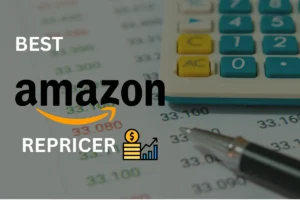Are you ready to dive into the world of selling products on Amazon’s FBA program? Well, buckle up and get ready to navigate the potential pitfalls that could derail your success.
In this article, we’ll be your guide, highlighting the top Amazon FBA product pitfalls and showing you how to steer clear of them.
You see, there are certain product categories that you should approach with caution. We’re talking about oversaturated products that are flooding the market, like those supplements and cell phone accessories that everyone seems to be selling.
And let’s not forget about the prohibited items that could land you in hot water with Amazon. Plus, there are tricky regulations to navigate when it comes to selling supplements.
And did we mention the importance of avoiding trademark infringement and counterfeit products? Oh, and be careful with those low-priced items and fad products that might not bring in the profits you’re hoping for.
So, stick with us and learn how to avoid these risky items and increase your chances of success on Amazon FBA.
Key Takeaways
- It is advisable to steer clear of oversaturated product categories on Amazon FBA, as competition can be fierce and it may be challenging to contend with established sellers.
- Sellers should familiarize themselves with restricted and prohibited products on Amazon FBA to avoid legal complications and product destruction.
- Sellers should avoid selling trademarked or patented products, as well as counterfeits, to prevent potential legal issues and product destruction.
Product Saturation
In the Amazon FBA ecosystem, “oversaturated” refers to a market segment flooded with numerous product listings that feature the same or very similar products. This saturation makes it significantly challenging for individual listings to stand out, especially for newcomers.
Effects
The repercussions of oversaturation in the marketplace can be detrimental for sellers:
Competition and Pricing Wars: With an abundance of similar product listings, sellers often find themselves in intense competition. This rivalry might push sellers into aggressive pricing wars, where they consistently undercut each other’s prices. Though it might seem like a viable strategy initially, in the long run, it erodes profit margins, making the venture less viable.
Diminished Visibility in Search Results: Amazon’s algorithm, which considers aspects like sales velocity, positive reviews, and even negative reviews, ranks products. In an oversaturated market, newer or less-prominent product listings can struggle to gain the necessary traction and remain lost amidst the plethora of search results. This diminished visibility can severely limit potential sales.
Tips to Avoid
Market Research Tools and Techniques: Amazon automation tools such as Jungle Scout, Helium 10, Viral Launch, or Ecom Circes Extension can be indispensable. They offer insights into market demand, competition, and the potential profitability of product listings, allowing sellers to decipher the saturation level and strategize accordingly.
Crafting Stellar Product Descriptions: In an oversaturated market, the devil is in the details. A compelling and clear product description can make your listing stand out. Ensuring that your descriptions accurately represent your product while addressing potential customer queries can lead to more positive reviews and fewer negative reviews.
Identifying Niches within Popular Categories: Delving deeper into broad categories might reveal niches that are less competitive. For instance, if the ‘fitness wear’ category is saturated, niches like ‘sustainable fitness wear’ could be less so. These niches can be gold mines, offering opportunities to cater to specific audiences and gather positive reviews.
Monitoring Trends to Catch Rising Products Early: Keep a close watch on market trends using resources like Google Trends or Amazon’s “Movers and Shakers”. Participating in forums, attending industry events, or being active in online seller communities can give you a leg up. By identifying a trend before it peaks, you stand a better chance to establish your product listings before the rush.
Prohibited Items
Prohibited items refer to specific products or categories that the company has deemed unsuitable or unsafe for sale, either due to regulations, ethical considerations, safety concerns, or other reasons.
These can range from items like alcoholic beverages, which have specific age-related sale restrictions, to other products banned due to regulations, ethical considerations, or safety concerns.
Beware of the potential landmines when it comes to selling on Amazon FBA. One major concern is prohibited items that could potentially lead to legal complications and put your business at risk.
Effects
Selling prohibited items can lead to severe consequences for Amazon FBA sellers:
Account Suspensions: Amazon is stringent about maintaining its platform’s integrity and safety. Selling prohibited items, even unintentionally, can lead to immediate account suspension. Such suspensions can interrupt your business flow, leading to a potential loss of income and a tarnished reputation.
Legal Ramifications: Some prohibited items, including specific alcoholic beverages, can be in violation of local, state, or international laws. Engaging in the sale of such items can attract legal troubles, ranging from lawsuits to severe penalties.
Fines and Penalties: Apart from potential legal actions, Amazon itself may levy fines on sellers who breach their policies. These fines can be substantial, adding financial strain to the existing challenges of running an online business.
Tips to Avoid
Familiarizing Oneself with Amazon’s Prohibited Item List: Amazon provides a comprehensive list of items that cannot be sold on their platform. It’s imperative for every seller to familiarize themselves with this list. Regularly revisiting and reviewing the list ensures you don’t accidentally list a banned product.
Regular Updates on Regulations and Industry Standards: It’s not just about knowing the current list. Regulations and industry standards can evolve. What’s allowed today might be prohibited tomorrow due to new research findings, changing laws, or shifts in societal norms. Join industry groups, sign up for newsletters, and set Google alerts on key categories to stay updated.
Seeking Clarity if Unsure (Amazon Seller Support): If you’re ever in doubt about the eligibility of a particular item, don’t hesitate to reach out to Amazon Seller Support. They can provide clarity on the status of products, ensuring you don’t inadvertently list something prohibited. Remember, it’s always better to ask and be sure than to assume and face consequences later.
Trademark Infringement
Trademark infringement occurs when a seller uses a brand name, logo, or any other trademarked material without proper authorization. This can include creating listings that falsely represent a brand, using copyrighted images, or selling counterfeit products that impersonate well-known brands.
Effects
Trademark infringement can have dire consequences for Amazon FBA sellers:
Account Suspensions: Amazon places immense value on maintaining trust with its shoppers. Sellers found guilty of trademark infringement can face immediate account suspension, disrupting business operations and damaging credibility.
Legal Ramifications: Trademark laws are stringent, and brands often actively monitor and defend their trademarks. Sellers violating these rights can face legal actions from the brand owners, resulting in lawsuits, compensation claims, or even criminal charges in certain jurisdictions.
Loss of Customer Trust: Consumers often rely on brand names to gauge product quality. Selling products that infringe upon trademarks can lead to negative reviews from customers who feel deceived, consequently eroding trust and impacting future sales.
Tips to Avoid
Conduct Thorough Research: Before listing a product, ensure you have the rights to use all associated brand names, logos, and images. This might require reaching out to the brand directly or sourcing products from authorized distributors.
Stay Updated on Trademark Registrations: Just because a brand or logo isn’t widely recognized doesn’t mean it isn’t trademarked. Tools like the U.S. Patent and Trademark Office’s (USPTO) online database can be used to check trademark statuses and registrations.
Engage in Authentic Selling Practices: Always be transparent in your product listings. Avoid making false claims or insinuating brand affiliations that don’t exist. This not only protects against trademark infringement but also ensures customers know exactly what they’re purchasing.
Frequently Asked Questions
How can I identify if a product is oversaturated in the Amazon FBA market?
To identify if a product is oversaturated in the Amazon FBA market, you need to consider factors like consumer purchasing power, competition, pricing, and technological advancements. Research the category, competition, and whether your product can contend with established sellers. The Ecom Circles Extension can help a great deal with that.
Are there any specific categories or industries that are more prone to having prohibited items on Amazon?
Some categories or industries on Amazon are more likely to have prohibited items, so it’s important to be cautious. Keep an eye on categories like supplements, cosmetics, and trademarked products, as they may have more restrictions in place.
What are some common prohibited ingredients to avoid when selling supplements on Amazon?
Some common prohibited ingredients to avoid when selling supplements on Amazon include those that have FDA warnings or recalls, as well as ingredients that violate FTC orders or guidance. Stay updated with regulatory changes to ensure compliance.
How can I ensure that the product I am selling does not infringe upon any trademarks or patents?
To ensure your product doesn’t infringe upon any trademarks or patents, you can conduct a thorough search of existing trademarks and patents. Additionally, consult with a legal professional to ensure your product is free from any potential infringement.
What are the potential consequences of selling products priced below $10 on Amazon?
Selling products priced below $10 on Amazon can be a double-edged sword. While it may seem like a bargain, you could be penny-wise and pound-foolish. The low-profit margins and fierce competition make it challenging to turn a profit and establish a sustainable business.
Try Ecom Circles’ automated tools for Amazon sellers now!






